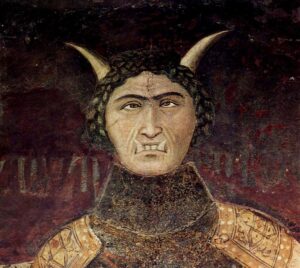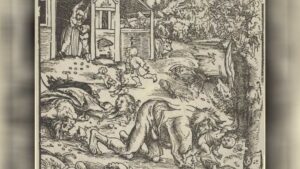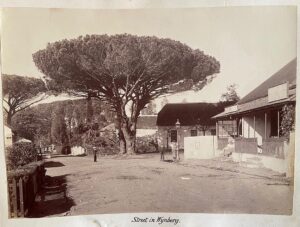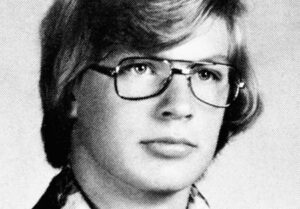The aphorism that a criminal always ‘returns to a crime scene’ features in literature in Dostoyevski’s Crime and Punishment of 1866, Arthur Conan Doyle’s A Study in Scarlet 1887 and in Agatha Christie’s Murder on the Links 1923. Do serial killers return to their crime scenes? Yes, in my experience they do, for various different motives.
When Robert Ressler, John Douglas and their colleagues from the FBI began interviewing serial killers in prison, they found many indications, that just like other people, serial killers are creatures of habit. Besides keeping memorabilia, as discussed in my video on Muti murders, one of their most significant habits was that serial killers tend to return to their crime scenes. This knowledge assisted us in catching a serial killer rapidly, late in my career as a profiler for the South African Police in 1999.
People generally like to return to a place that had a special meaning for them. A trip down memory lane leads them to revisit their honeymoon hotels, their hometowns, schools, or any other venue with sentimental value. So do serial killers – it is a very human thing to do.
There are different motives propelling them to revisit the scenes of crime.
During the Station Strangler investigation in Mitchells Plein, Cape Town the bodies of 21 little boys were found sporadically – they had been murdered since 1986, with 1987 being an active year with seven boys, and another two in 1988, two in 1989, followed by a cooling off period and then a surge again starting in 1992. In January 1994 the discovery of one body in the dunes led to the South African Police orchestrating organised searches of these dunes which eventually produced 11 bodies found in a month.
This led to the forming of the Station Strangler squad, whom I joined shortly after – my very first investigation as a profiler. We released the names of the victims chronologically in the order that they were found to the newspapers. And after that we found another body with a note tucked into his pocket reading: “No 14, many more to score.” As the profiler I made the deduction that the Station Strangler was an obsessive-compulsive perfectionist, who returned to this particular body to place its correct sequence of murder victim in his pocket, but it also indicated that he knew exactly where everyone of his victims lay in those vast dunes.
On one of the crime scenes we also found a glass bottle, with liquid still inside but the label had not yet been faded by the sun – and yet the body was decomposed, which meant the bottle was disposed there long after the victim had been murdered. Only the killer would sit drinking next to the body of a child victim – which meant he returned to celebrate. So, the Station Strangler was motivated by his obsessive compulsiveness to return to his crime scenes, as well as a need to celebrate. Perhaps it made him feel good knowing he was out on the loose, while the community and police were searching for him, but not for long. He was arrested on 13 April 1994.
Moses Sithole, the Atteridgeville serial killer not only dumped his bodies around Atteridgeville but also at Onderstepoort and then on the crime scene near the Boksburg prison he left ten bodies, who had been killed over a period of time. Due to their proximity it was quite apparent that Moses must have brought live victims to this scene where they would observe and certainly smell the other bodies in various stages of decomposition, some still clearly bound. Knowing this would be her fate, would induce a paralysing fear in his victim, a clear sign of the psychological torture he inflicted upon them, besides the physical torture. So, Moses Sithole was motivated by his gratification of psychological torture and intimidation.
Possessiveness is another human trait that serial killers – being human – are prone too. Many of them, like the Station Strangler, Moses Sithole, Sipho Twala the Sugar Cane killer, and David Selepe, left the bodies of their victims in clusters. They committed the murders and left the bodies in places which they were very familiar with and where they felt safe. This became “their graveyard” and they resented the police “scratching around” in their graveyards, just like children dislike their parents snooping around in their rooms or cupboards.
The Cleveland serial killer, David Selepe went so far as leaving a body on exactly the same spot where the police had removed a previous body – this could be an example of extreme territorial possessiveness, or defiance.
Steward Wilken, alias Boetie Boer, returned to the crime scenes of the little boys left in secluded areas to commit necrophilia with their decomposing corpses, so he was motivated by uninhibited lust. He was also present when the police were processing the crime scenes of the sex workers he left spreadeagled on open display in the parks to humiliate them but also he admitted later, to learn from the forensic team how to cover his tracks. He noticed they collected hair samples and vowed to shave his bodily hair – although I doubt that he did.
Christopher Zikode, the Donnybrook serial killer also attended the crime scenes when his victims were discovered, and as a bystander and helpful neighbour he even helped the mortuary attendants to lift the body stretcher into the mortuary van.
Another serial killer who was part of the audience who watched the police process the crime scene of his victim, whose burnt corpse he had left on display in a park, was Norman Hobkirk, the pyrophiliac. He operated in Bertrams, Johannesburg in 1997. He told me he had the common sense to stand behind the police photographer so he would not show up later in the photographs. Since then, I advised police photographers to video tape bystanders from all angles.
Both Zikode and Hobkirk returned to their crime scenes out of curiosity, but probably also because they felt possessive about the bodies.
Some serial killers observe their crime scenes being processed from a safe distance. The Sugar Cane serial killer, Sipho Twala, who lived in an informal settlement with a view over the sugar cane fields, told me he watched us processing the crime scenes from his home. The fact that he knew we had found his victims and even released police dogs to find them, did not deter him though.
Robert Ressler told me some serial killers disliked “releasing” the bodies to the police. They visit the bodies in the mortuaries or they attend the funerals of the victims and some of them visit the graves of their victims. This is not a sign of compassion, it is possession. Some extended the thrill of the murder by calling in the crime scene to revel in the excitement of the body being discovered.
On 4 January 1999 during my last serial killer investigation case for the South African Police, I was summoned to a crime scene on the crest of Capitol Hill in Pretoria. A woman was discovered on the exact same spot, where two days prior detectives had found two male bodies, one stacked on top of the other. Another male body was discovered 600 meters from the other two. All victims had been killed at different times.
The fresh female body we were attending to was covered in maggots still on the scene, from the previous bodies. Since this killer was clearly very possessive of his crime scene, to such an extent that he stacked them, I advised the detective in charge, Captain Andre Fabricius, to keep the scene under surveillance that night. A member of the police’s Task Force, who was trained in concealing himself for days at a stationary spot, was deployed there and lo and behold, that night the killer, Samuel Sidyno was arrested as he returned to the scene. Sidyno was eventually sentenced with seven life sentences for the murders that could be linked to him.
So yes, like any other person, serial killers return to the places that have meaning for them. Unfortunately, police forces seldom have the manpower to keep all the crime scenes under surveillance and finding a person some time later on an already processed and cleared crime scene, does not necessarily link him to the murder. Family members sometimes return to crime scenes to leave flowers or perform cleansing rituals. Perhaps the killer is watching them, and perhaps the police is watching him.







